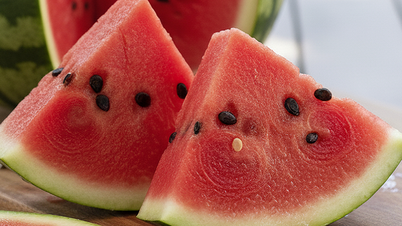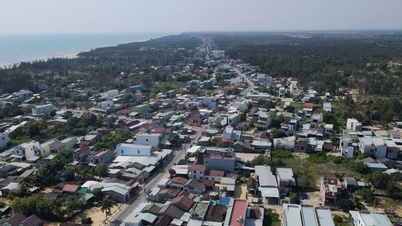Anthocyanins are a group of powerful antioxidants that give many plants their red, purple, and dark blue colors, such as blueberries, black grapes, and black raspberries. Many studies have shown that anthocyanins can prevent the buildup of fat in blood vessel walls, which is the initial stage of atherosclerosis, according to the health website Healthline (USA).

Blueberries and raspberries are both purple fruits that are very good for your health.
PHOTO: AI
Studies show that regularly eating fruits rich in anthocyanins can help reduce the risk of cardiovascular disease. Anthocyanins in purple fruits have positive effects on blood vessels through the following mechanisms:
Endothelial protection
Plaque buildup in the artery wall usually begins when LDL “bad” cholesterol becomes oxidized. This process is strongly influenced by oxidative stress and endothelial damage.
Anthocyanin has excellent antioxidant properties, helping to prevent the formation of oxidized LDL cholesterol and improve endothelial cell activity. In addition, anthocyanin also increases the activity of the enzyme nitric oxide synthase, which has a vasodilating effect and reduces the risk of leukocyte adhesion to the vascular wall.
Prevents cholesterol plaque buildup
One of the factors that determine the formation of atherosclerosis is the increase of "bad" LDL cholesterol and the decrease of "good" HDL cholesterol. Anthocyanins have the ability to regulate these parameters, thereby reducing cholesterol deposition in the vascular wall.
Inhibition of inflammation
Cholesterol buildup in the blood vessel walls is a chronic inflammatory process. When the endothelium is damaged, adhesion molecules are released and attract white blood cells. The white blood cells then transform into macrophages, a type of cell that specializes in "cleaning up" the excess material.
Macrophages will absorb oxidized LDL and become foam cells. The accumulation of foam cells will gradually form plaque in the blood vessel wall, narrowing the blood vessels and increasing the risk of cardiovascular disease. Anthocyanin can stop this inflammatory chain reaction, limiting the formation of foam cells, thereby preventing fat accumulation and fibrosis of the blood vessel wall.
Enhanced endothelial function
Impaired function of the endothelium, the layer of cells that lines the inside of blood vessels, is an early sign of coronary heart disease and atherosclerosis. Anthocyanins help protect the endothelium by activating biological mechanisms that increase the production of nitric oxide, a key molecule that helps blood vessels dilate.
When nitric oxide increases, blood vessels become more flexible, less constricted, and cholesterol is less likely to stick to the vessel walls. As a result, blood vessels maintain their elasticity, significantly reducing the risk of fat accumulation and plaque formation, according to Healthline .
Source: https://thanhnien.vn/loi-ich-suc-khoe-dac-biet-tu-cac-loai-trai-cay-mau-tim-dam-185251108185834457.htm


![[Photo] Cutting hills to make way for people to travel on route 14E that suffered landslides](https://vphoto.vietnam.vn/thumb/1200x675/vietnam/resource/IMAGE/2025/11/08/1762599969318_ndo_br_thiet-ke-chua-co-ten-2025-11-08t154639923-png.webp)









































![[Video] Hue Monuments reopen to welcome visitors](https://vphoto.vietnam.vn/thumb/402x226/vietnam/resource/IMAGE/2025/11/05/1762301089171_dung01-05-43-09still013-jpg.webp)



















































![Dong Nai OCOP transition: [Part 2] Opening new distribution channel](https://vphoto.vietnam.vn/thumb/402x226/vietnam/resource/IMAGE/2025/11/09/1762655780766_4613-anh-1_20240803100041-nongnghiep-154608.jpeg)













Comment (0)